No matter if you’re a web developer, data analyst, machine learning engineer, or just starting your journey in programming, Python has something for everyone.
So, what is Python used for?
Python, a versatile and dynamic programming language, is widely recognized for its extensive range of applications. Enhanced by an extensive library support system, featuring Pandas, NumPy, TensorFlow, and PyTorch, Python has emerged as a key player in driving innovations in web development, data analysis, visualization, machine learning, and artificial intelligence.
Also, Python’s user-friendly interface and efficiency make it a preferred choice across multiple industries, empowering them to tackle complex challenges with ease.
In this article, we’ll delve deeper into why Python is a popular choice among developers due to its flexibility and robust performance, even in the most advanced cutting-edge applications.
So, are you ready to unravel the many use cases of this flexible programming language?
Let’s get started.
Top 6 Reasons to Choose Python for Your Next Project
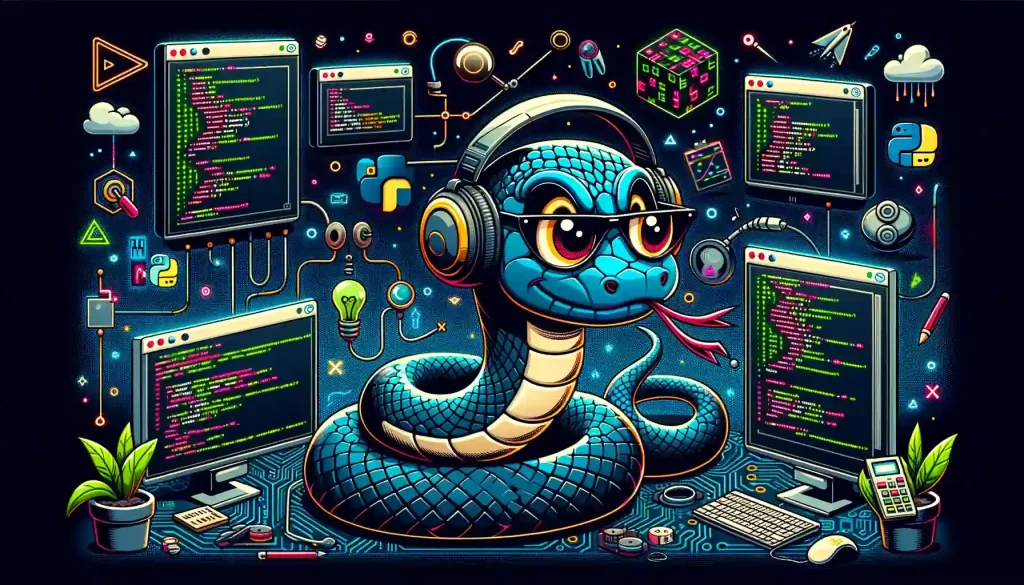
Python has numerous applications in various industries. Let’s explore the most common use cases for Python, providing you with a better understanding of its capabilities.
Now, let’s explore the Top Applications of Python:
1. Web (Internet) Development

Python offers an extensive array of features and libraries like Flask and Django to facilitate internet development, allowing the building of everything from simple websites to complex, feature-rich web applications.
Python makes the process smoother and more efficient, enabling developers to focus on writing programs and logic.
Also, Compared to other languages, Python’s syntax is straightforward and readable, making it accessible to software engineers and developers at different expertise levels.
It encourages the development of clean and maintainable code, which is particularly crucial in a collaborative environment.
Moving on, let’s dive into Python’s role in the cutting-edge field of AI.
2. Machine Learning and Artificial Intelligence (AI)

Python has emerged as a leading player in machine learning and artificial intelligence, domains that require the processing of a vast array of data.
Libraries like TensorFlow and scikit-learn are instrumental in developing models that can learn from and make decisions based on data.
Python makes the implementation of machine learning algorithms simpler, allowing software engineers to focus on solving problems and optimizing algorithms without getting bogged down by language complexities.
Now, let’s dive into the patterns and insights that emerge when we bring data to life.
3. Data Analysis and Visualization
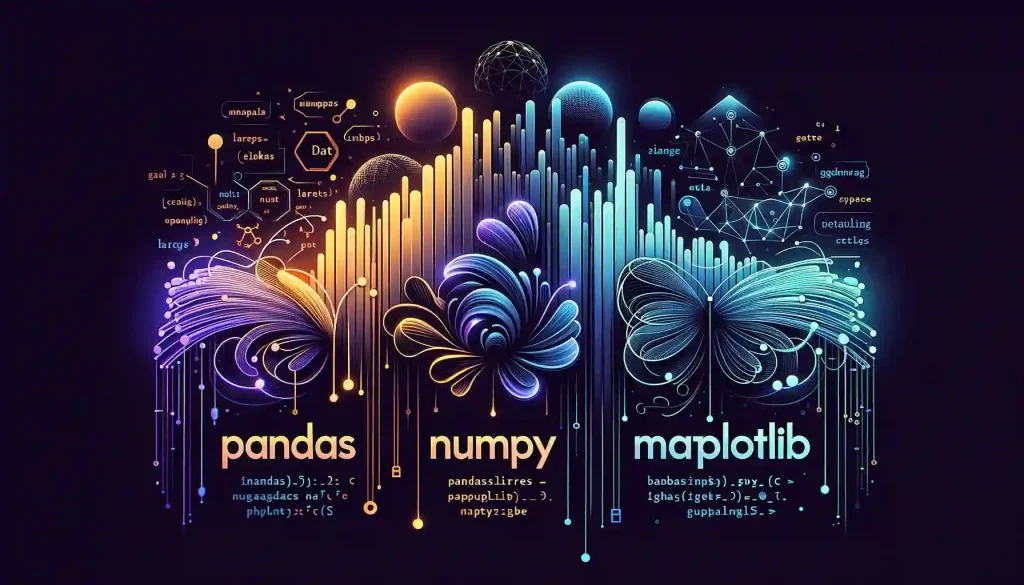
Python excels in processing and analyzing data, turning raw information into valuable insights.
It’s become a popular language among data analysts due to its powerful libraries like Pandas and NumPy, which offer extensive functionalities for data manipulation and analysis.
Data visualization is another area where Python shines.
Libraries such as Matplotlib allow for the creation of a wide range of static, animated, and interactive visualizations.
This, coupled with Python’s ability to easily integrate with other languages and tools, makes it a powerful tool for data analysis and visualization.
Now, let’s see how Python streamlines workflows through automation.
4. Automation and Scripting

Automation is one of the domains where Python truly excels. Python’s simplicity and flexibility make it a preferred choice for software engineers looking to automate various processes.
Its syntax allows for the writing of scripts and programs that can automate repetitive and mundane tasks such as file management and web scraping, enhancing productivity and efficiency across different industries.
Python’s popularity as a scripting language also comes from its ease of use and the ability to write and debug scripts quickly. This makes it a preferred choice for automating aspects of software development and other operational processes.
Now, let’s explore the backbone of modern technology through code and queries.
5. Software Development and Database Interaction
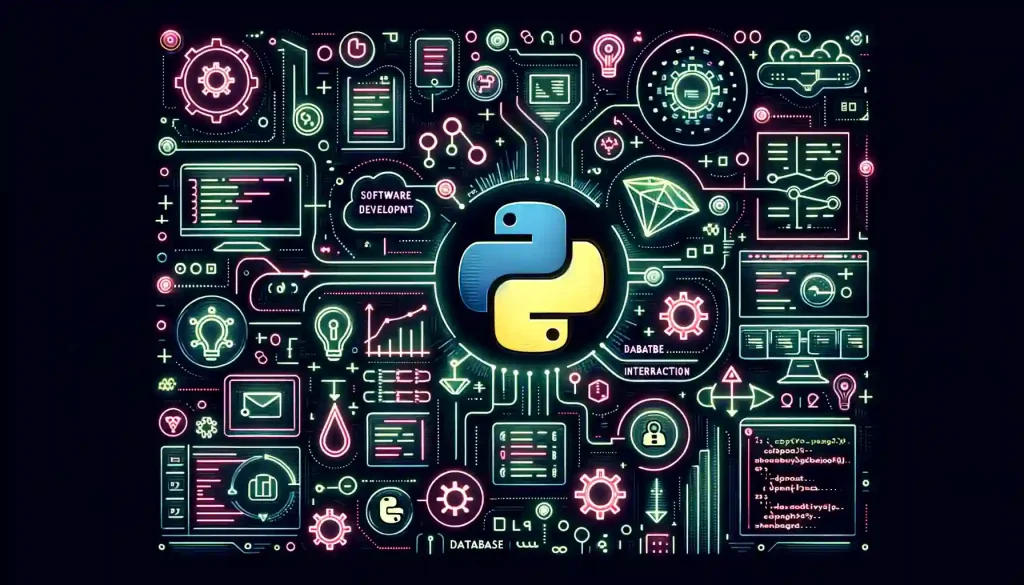
Python is widely used in software development for creating both desktop GUI applications and command-line programs.
Libraries like Tkinter make it easier to develop user interfaces. Python’s ability to interact with databases is another strength, with libraries like SQLAlchemy allowing seamless interactions with various database systems.
Software engineers find Python to be a powerful tool for writing programs that manage data, perform backend operations, and interact with databases.
Also, Its popularity is due to its simplicity, extensive library support, and a strong community of developers.
Next up, let’s explore putting our code to the test for quality and performance.
6. Software Testing
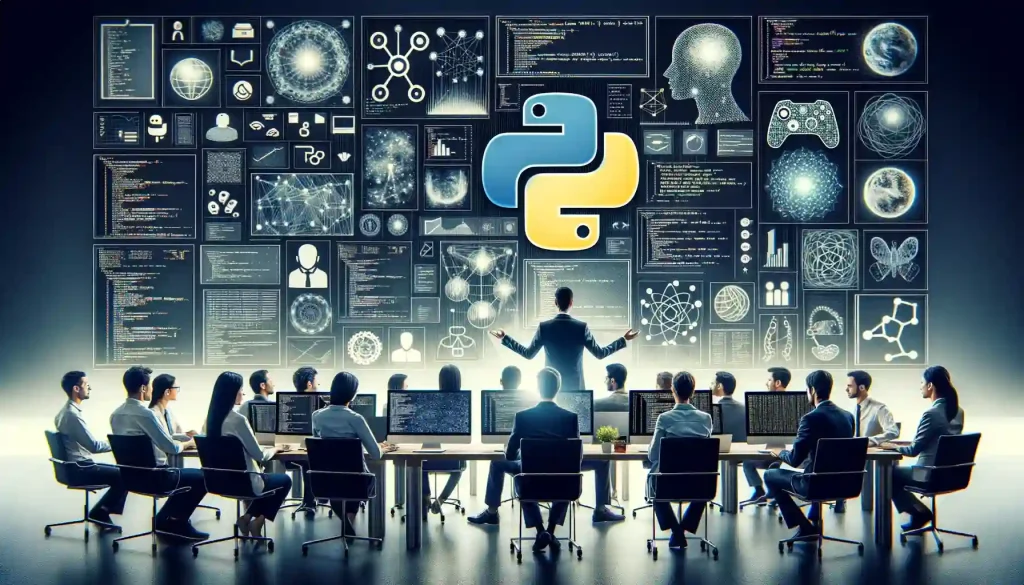
Python is popular in software testing due to its simplicity and the robust testing tools it offers, such as pytest.
This allows software engineers to write comprehensive test cases, ensuring software applications run smoothly and as expected.
Python simplifies the testing process, making it easier to identify bugs and issues in software applications. The strong community support provides a wealth of resources and tools to help in the effective testing of software applications.
Also, its versatility and ease of use, combined with its extensive library support, make it a preferred choice for both beginners and experts in various domains.
Let’s uncover the Python power players in the realm of libraries and frameworks.
The Most Popular Python Libraries and Frameworks
Web Development Frameworks
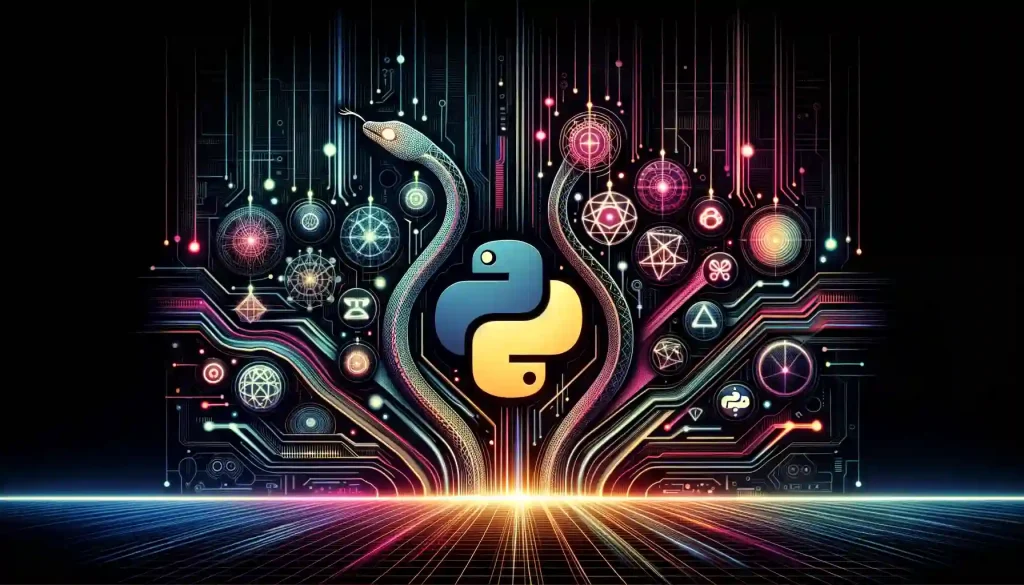
When it comes to web development, Python offers several robust frameworks that can help you build powerful applications with ease. Some of the most popular web development frameworks in Python include:
Django: A high-level framework that encourages rapid development and clean, pragmatic design. Django is known for its robust admin interface, easily handling complex queries, and reusable code.
Flask: A lightweight micro-framework that is easy to use and perfect for small to medium-sized projects.
Pyramid: A flexible framework suited for large-scale applications, enabling developers to fine-tune various components while maintaining a minimalistic approach.
Web2py: An open-source, full-stack framework with an integrated web-based IDE, simplifying the development process for beginners and experienced developers alike.
Below, discover the engines of intelligence that drive the next wave of tech innovation.
Machine Learning Libraries

Python excels in the realm of machine learning, thanks to its rich ecosystem of libraries that cater to common data processing tasks. Some of the most widely used data science libraries are:
TensorFlow: Developed by Google, TensorFlow is an open-source library for numerical computation and large-scale machine learning applications.
Keras: A high-level, easy-to-use API built on top of TensorFlow that provides an efficient interface for deep learning tasks.
PyTorch: Developed by Facebook, PyTorch is another open-source library for deep learning, offering flexibility and a dynamic computation graph.
Next, let’s dive into the tools that turn data into decisions.
Data Science Libraries
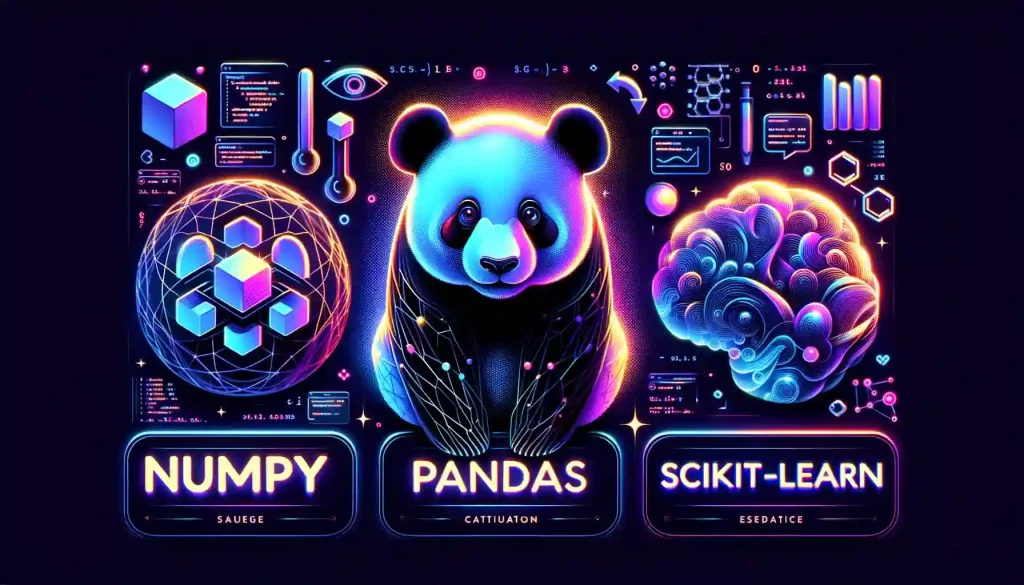
Python is particularly strong in data science due to its numerous libraries and frameworks, such as NumPy, pandas, and scikit-learn. These libraries enable data scientists to efficiently process, analyze, and visualize large datasets.
NumPy: A fundamental library for scientific computing, providing support for multidimensional arrays, linear algebra, and various numerical operations.
Pandas: A library for data manipulation and analysis, pandas offer data structures such as DataFrames and Series, making it easier to work with structured data.
Scikit-learn: A library for machine learning, scikit-learn provides various pre-built models and tools for common machine learning tasks, such as classification, regression, and clustering.
Coming up, let’s paint a picture with data using top visualization libraries.
Visualization Libraries

To transform complex data into visually appealing and insightful charts, Python boasts some powerful visualization libraries. Among these are:
Matplotlib: A popular library for creating static, animated, and interactive visualizations that offer extensive customizability and control over every aspect of a figure.
Seaborn: Built on top of Matplotlib, Seaborn simplifies the process of creating aesthetically pleasing visualizations through numerous pre-built themes and color palettes.
Utilizing these libraries and frameworks, you can harness the full potential of Python across various domains such as web development, machine learning, data science, and visualization.
Ahead, let’s uncover how Python is revolutionizing the tech industry.
Python in the Tech Industry
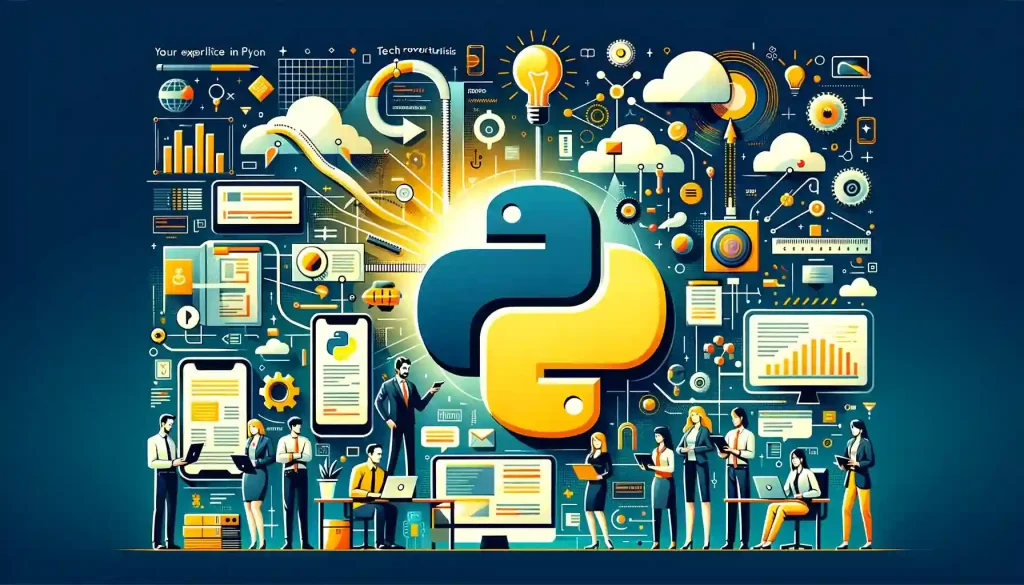
As a software developer or data scientist, you’ll find that Python is widely used throughout the tech industry.
Major companies like Google and YouTube have adopted Python as one of their primary programming languages due to its powerful capabilities, ease of use, and versatility.
As a Python developer, you can contribute to various aspects of software engineering, such as creating web applications, developing software packages, automating tasks, or even working on machine learning and artificial intelligence projects.
Really, the language’s simplicity makes it a popular choice for software developers and engineers at every experience level, from novices to experts.
Remember, your expertise in Python can open up a world of opportunities in the tech industry.
Next, let’s take a look at how Python stacks up against other programming languages.
What Are The Advantages of Python?

Python is a versatile programming language that offers a multitude of benefits to its users.
Python’s popularity stems from its simplicity, making it accessible for beginners to learn and read. With a clearly defined syntax, learning Python is much more accessible compared to other programming languages.
Another advantage of Python is its cross-platform support.
You can run Python applications on various operating systems, including Windows, macOS, and Linux. This makes it a highly portable language, allowing developers to write code on one platform and easily deploy it on others.
Also, the extensive library support in Python is also a key factor contributing to its popularity.
With a wide range of third-party modules and in-built libraries, such as NumPy for numerical calculations and Pandas for data analytics, Python can cater to a variety of applications.
Lastly, Python’s user-friendly data structures are just the beginning. Its vast and dynamic open-source community is what truly sets it apart. This continuous improvement and updates in the language ensure that Python remains a popular choice for developers.
Do you think we are a fan of Python? If so, you’re right!
Now, let’s peer into the crystal ball to see what the future holds for Python.
What is The Future of Python?

Python, with its versatile nature, caters to various domains and has emerged as one of the most sought-after programming languages.
Being a high-level, multi-paradigm language, you will find Python employed in diverse applications like web development, data analysis, artificial intelligence (AI), machine learning (ML), and more.
This wide range of use cases implies that Python is here to stay, and you can expect continuous growth in its adoption.
Furthermore, one of the key factors contributing to Python’s increasing demand is its extensive use in machine learning. As ML continues to shape the future of technology and data-driven industries, having Python proficiency puts you ahead of the curve. However, be prepared to delve into complex mathematics and data analysis to excel in this field.
Also, the future scope of Python is also evident with its increasing adoption in popular platforms like Netflix, Google, Instagram, and Dropbox.
As a result, you’ll find more job opportunities and higher salaries for Python developers compared to their counterparts working with other programming languages.
Finally, let’s reflect on the enduring impact of Python in the programming world.
Final Thoughts on Python Programming

So, there you have it. Python’s versatility and growing popularity make it a powerful and indispensable tool for developers and data scientists alike.
Its user-friendly nature, extensive library support, and strong community backing make Python the preferred choice for a wide range of tasks in the tech industry.
So, whether you’re a beginner looking to learn Python or an experienced developer seeking new skills, Python offers something for everyone. Its readability and simplicity make it easy to grasp, while its wide range of applications allows you to work on diverse projects across different domains.
With dedication and hard work, you’ll find yourself mastering this versatile language and contributing to the ever-growing Python ecosystem in no time.
Wanna learn more about how Python can be used? Check out our latest clip below:
Frequently Asked Questions
Why is Python considered a popular programming language?
Python consistently ranks among the most popular programming languages due to its simplicity, code readability, and versatility in handling various data-related tasks, making it favored by both beginners and experienced developers.
How does Python facilitate learning programming?
Learning Python is particularly accessible due to its clear syntax and a strong community offering extensive resources, including Python basics and advanced tutorials. Python training is widely available, helping newcomers quickly get up to speed with writing code and developing projects.
What makes Python so popular in the financial industry?
In the financial industry, Python is extensively used due to its powerful tools and libraries that enable tasks such as statistical analysis, data visualizations, and processing relevant data efficiently, contributing to robust business applications and enterprise management applications.
What are some popular Python frameworks used in web development?
Python frameworks like Django and Flask are prevalent choices among web developers. These frameworks expedite internet development, offering a structured way to build websites and manage project elements like bug tracking and application programming interfaces (APIs).
How is Python used in project management and task automation?
Python simplifies project management through various tools and libraries that assist in task automation, bug tracking, and facilitating automated continuous compilation, ensuring that projects are managed more efficiently.
What Python tools are essential for enhancing Python skills in application development?
To enhance one’s Python skills, tools like integrated development environments (IDEs), libraries, and frameworks are essential. These tools assist in writing Python code efficiently, managing data, and even incorporating machine learning algorithms into applications.
Why is code readability important in Python programming?
Code readability is a fundamental aspect of Python programming language, emphasizing clear, logical code that is easy to maintain and debug, which is crucial for effective project management and swift bug fixes.
How does Python integrate with other technologies and programming languages?
Python offers easy integration with various application programming interfaces (APIs) and can work alongside other popular programming languages, which is particularly beneficial for internet development and enhancing the functionality of applications.
Could you mention how Monty Python relates to the Python programming language?
The name “Python” for the programming language was indeed inspired by Monty Python, the British comedy group. The creators of Python wanted to signify that the language was fun to work with, and the reference to Monty Python was a nod to this intent.








